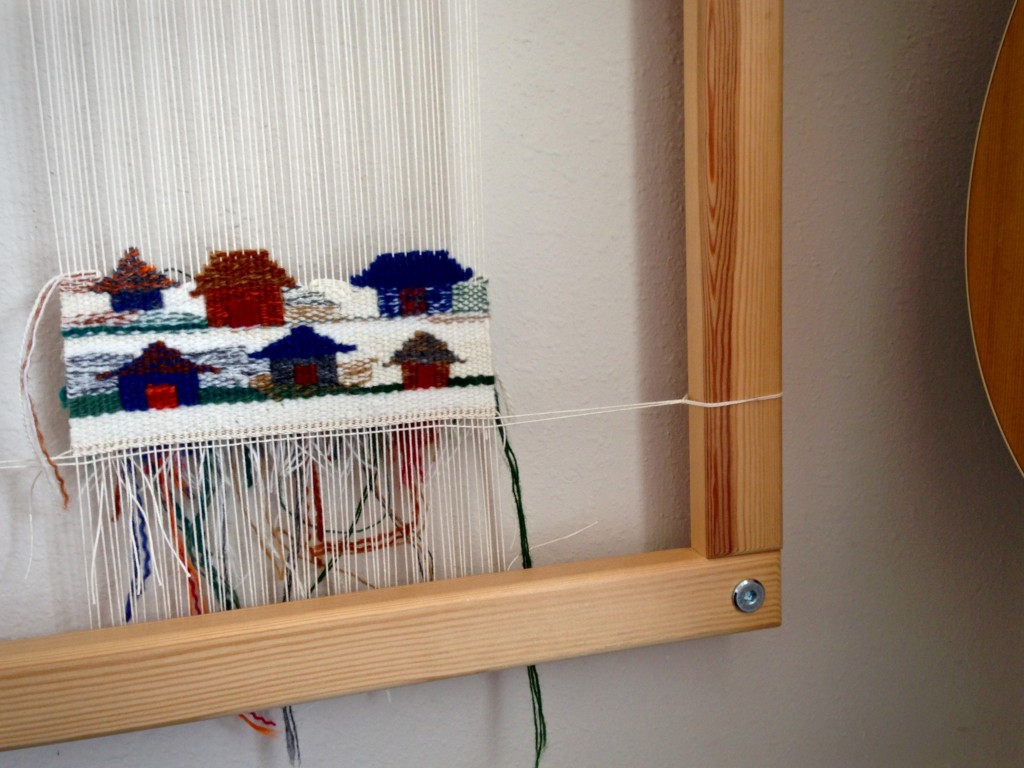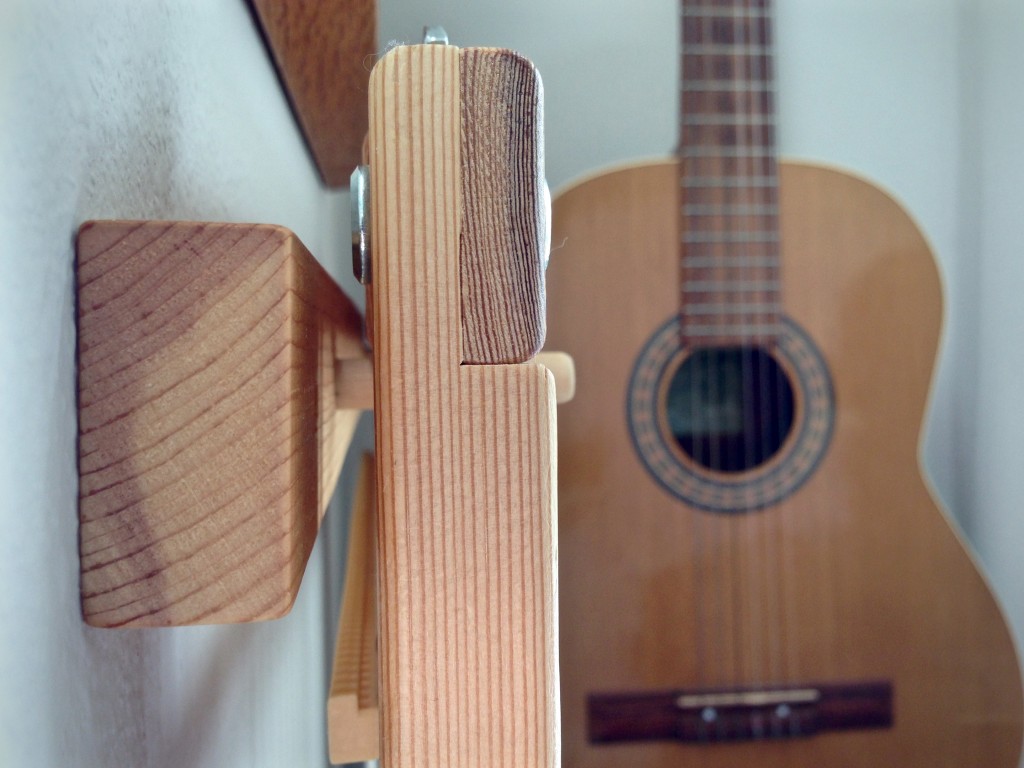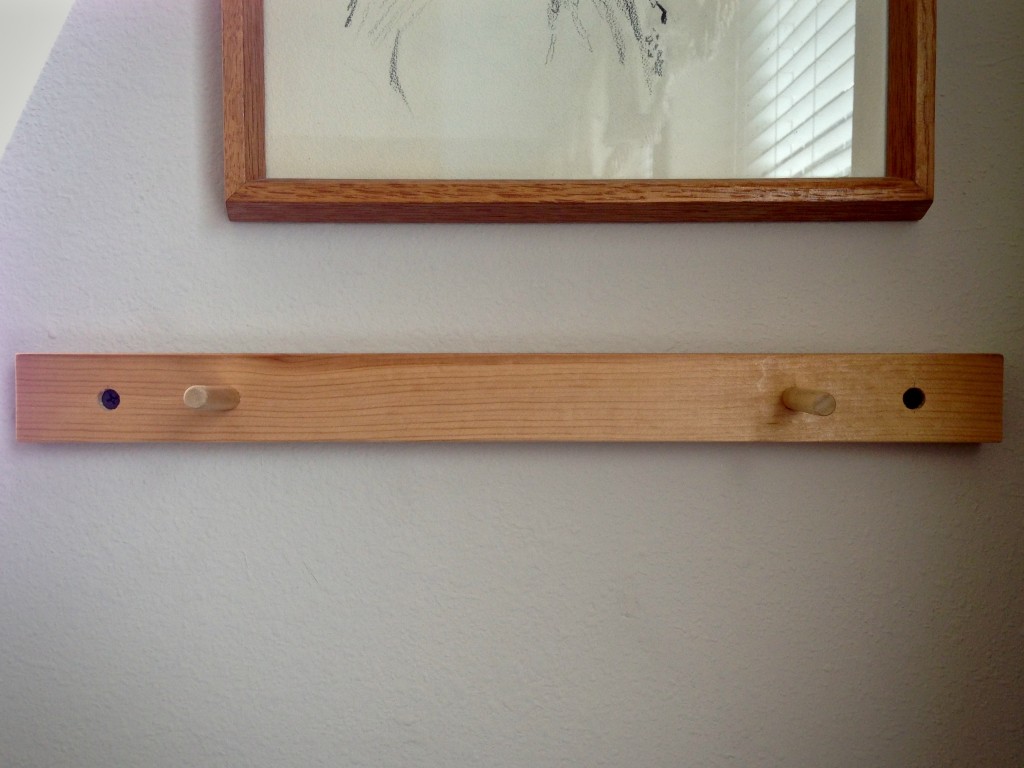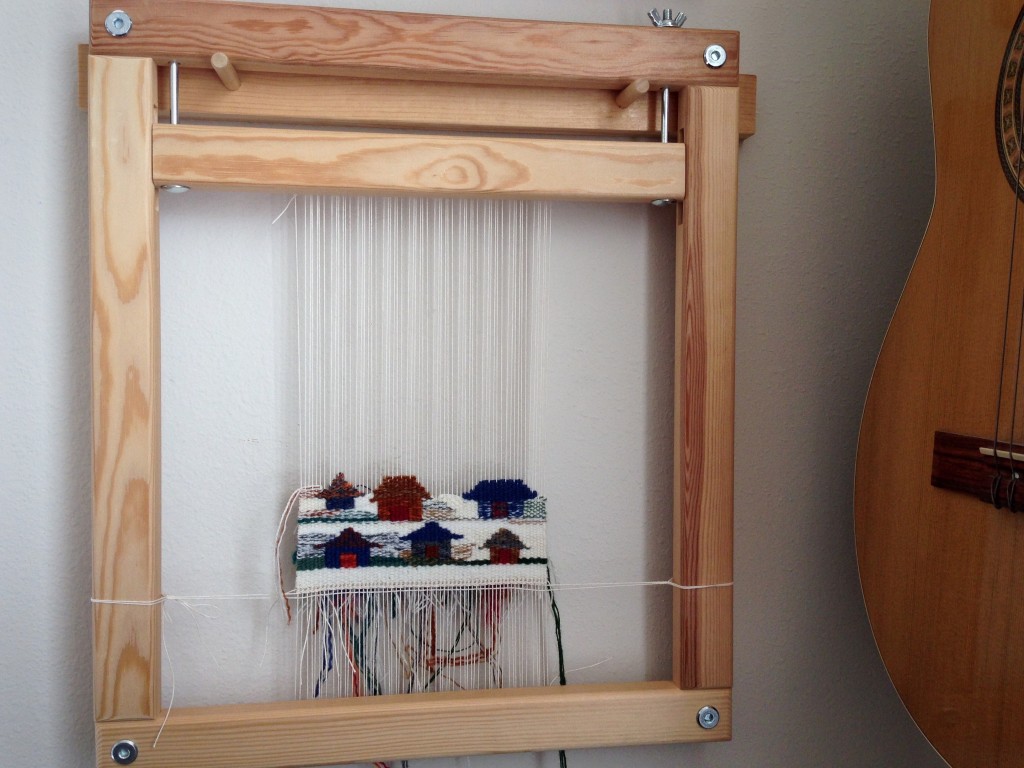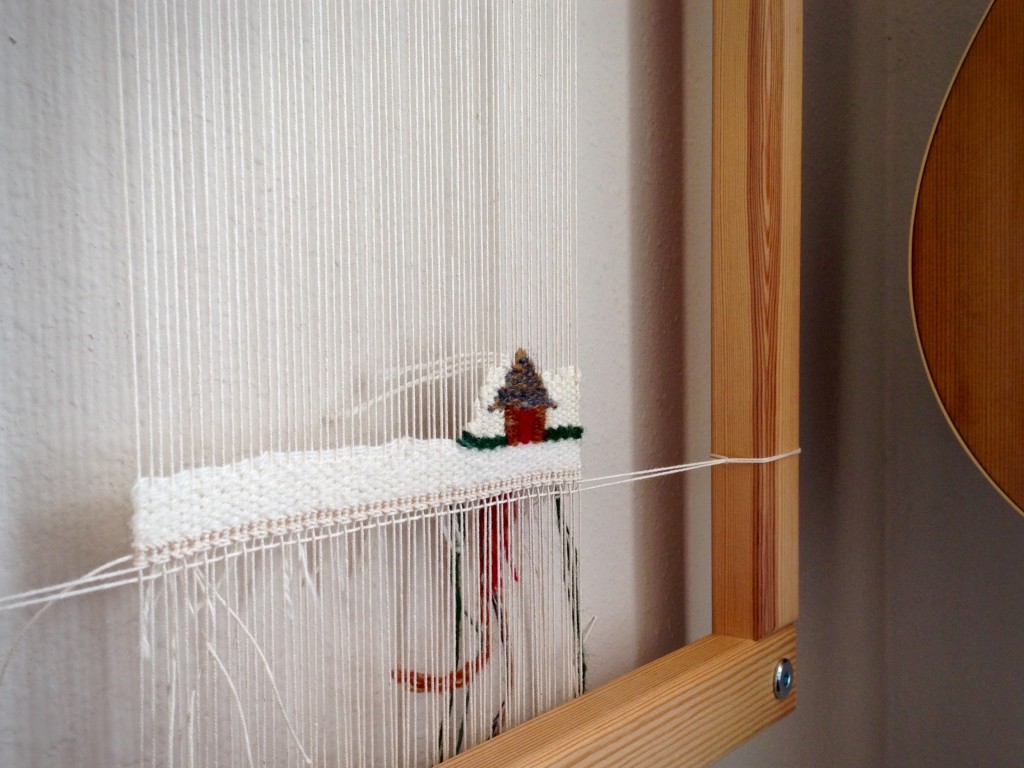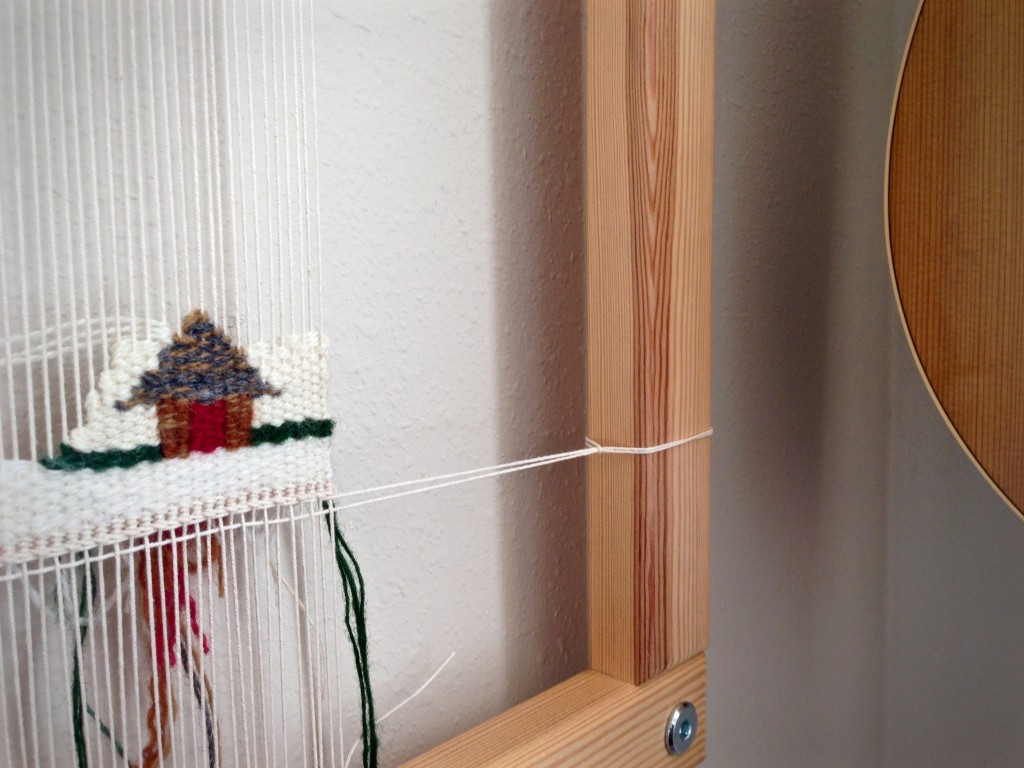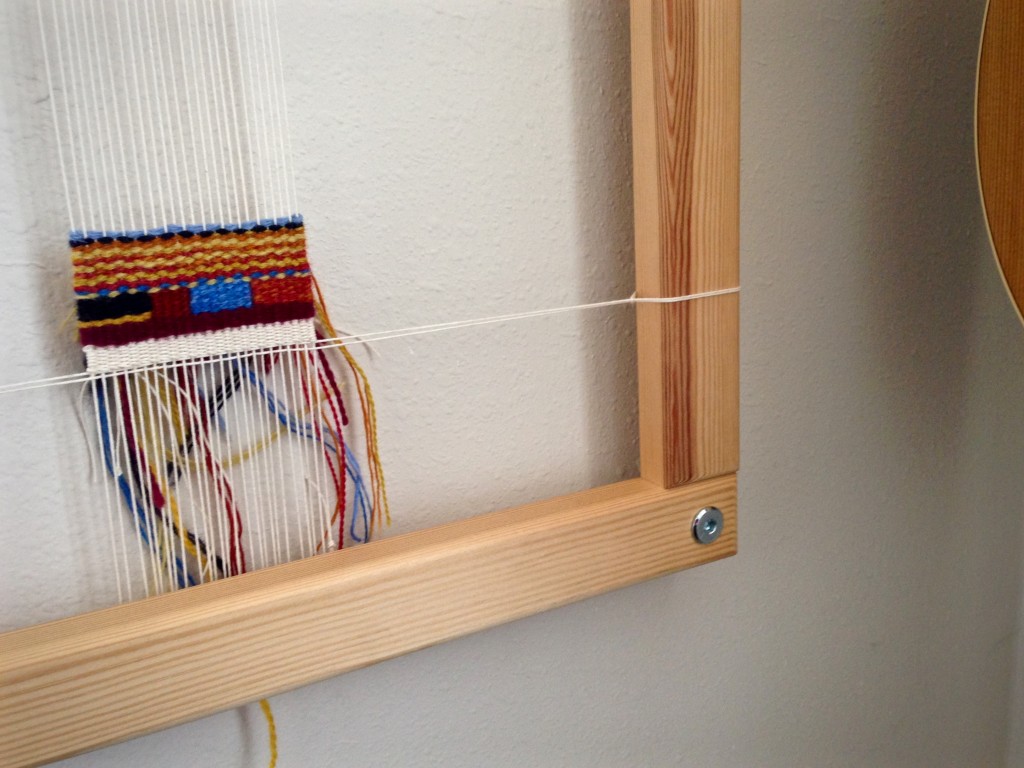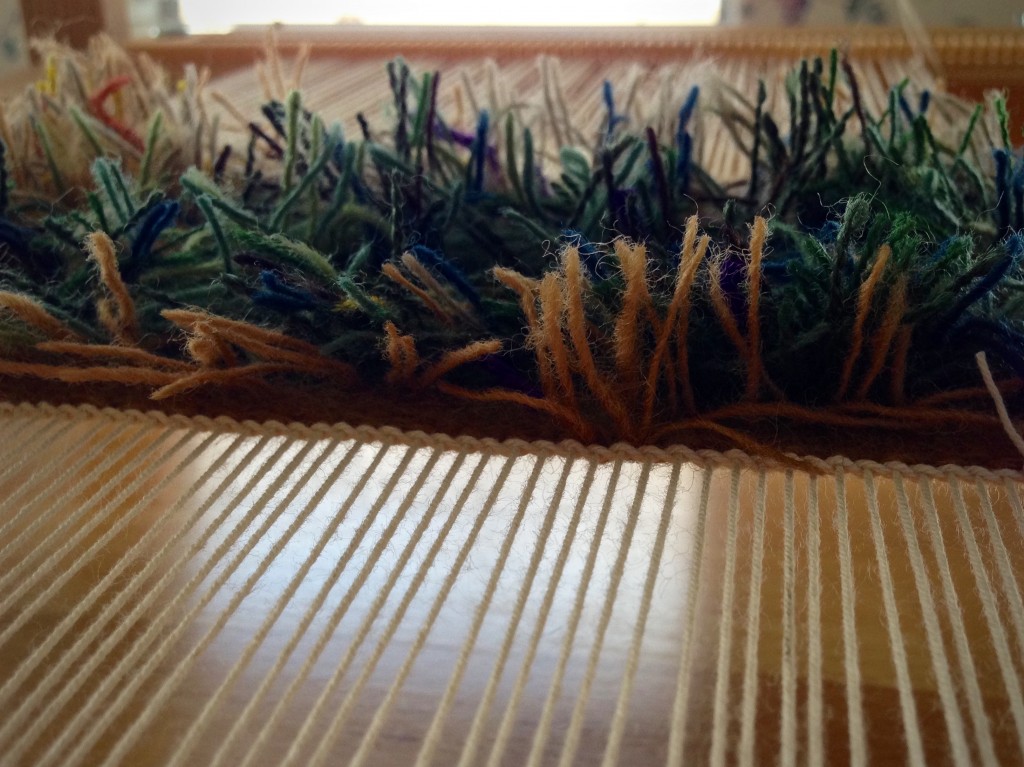The little village is waking up. Sun rising. This small tapestry is near completion, and I am happy with the things I have learned in the process. Now, I am preparing a cartoon and gathering an array of Fåro wool colors for the next small tapestry. I may be jumping in over my head with this next one, but I will learn new things to practice.

In my tea and tapestry time (tapestry diary) in the evenings, my intention is to improve my tapestry skills by practicing the little that I know. The concept is to learn by doing. Find what works, and do it more. For example, in the class I recently attended at Weaving Southwest, Teresa Loveless worked with me on the hatching technique. When I came home to this little tapestry village, I wanted to implement that new understanding right away. The sunrise sky, created with hatching, came as a result of Teresa’s coaching and my desire to learn by doing.
Isn’t that how we navigate through life? Take what you know about how to live, and how to please God. And then do it more. Learn by doing. Every new insight builds, not on what we know, but on what we have put into practice.
May you enter a sunrise season of life.
With pleasant anticipation,
Karen

